Just outside of Villierstown, Co Waterford, mixed farmer Pádraig Connery is getting ready to let his cattle out to grass. Wet weather has stalled work in the tillage fields at present.
He buys store cattle to graze and finish, alongside a tillage enterprise on just over 400 acres.
This year, Pádraig has 54 cattle on the farm, increasing from 45 last year.
A strong year for tillage in 2022 allowed him to buy in the extra store cattle, and he would like to have bought more if he had extra silage. Pádraig hopes to get at least half of these animals out as soon as ground and weather conditions allow to start grazing off the 20 acres of silage ground before 10 April. This will allow him to close off the ground and cut silage at the end of May. Pádraig’s target this year is 300 bales, some of which will come from ground he hopes to reseed this year.
Pádraig purchases most of his cattle from Roscommon and Ballinasloe through an agent. The cattle are March- and April-born and are killed coming up to 30 months old, which will be next August to October.
Pádraig used to buy his own cattle, but as the farm moved more into winter cropping, it meant that the month of October was spent planting instead.
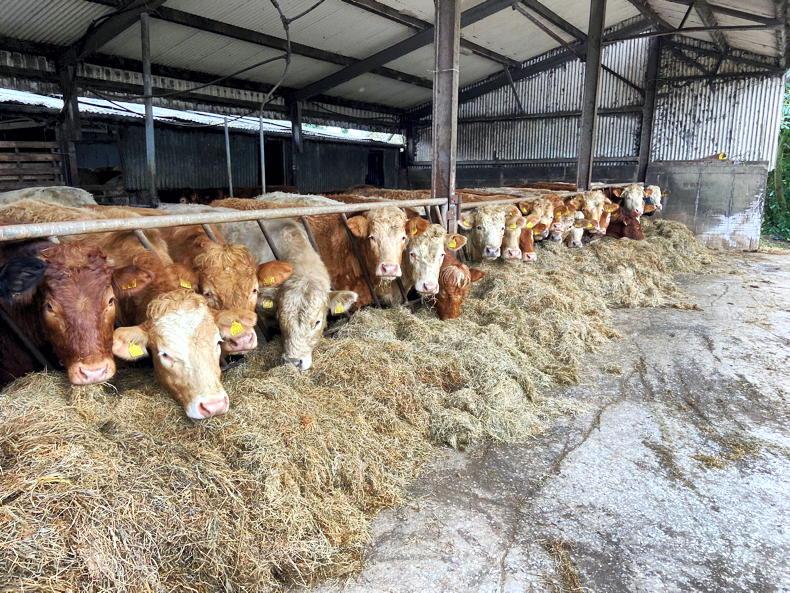
Padraig hopes to get the cattle out to grass this week to graze off silage ground.
In terms of spring crops, almost 30 acres of spring beans were sown on 9 February at a rate of 205kg/ha. They were rolled and got a pre-emergence spray on 13 February.
For spring barley, Pádraig has three contracts to fill this year. He has 50 acres for Boortmalt, 25 acres of malting barley for Tírlan and 20 acres for Denns, which is destined for Irish Distillers.
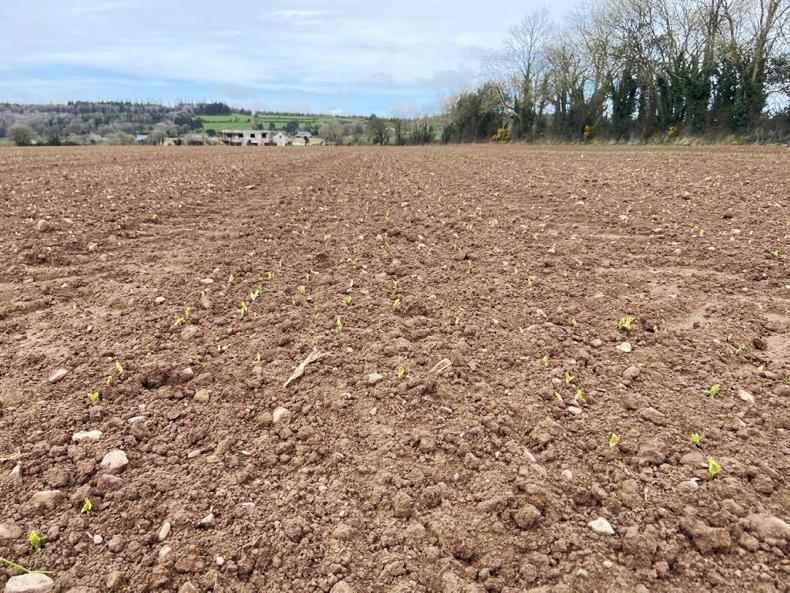
Pádraig's spring beans are just starting to show. They were sown on the 9 February at rate of 205kg/ha.
Most of this ground is ploughed, and Pádraig is just waiting on slurry tanks to fill so that he can plough it in to the final 10 acres.
Otherwise, all the seed and fertiliser is in the yard and he is ready to start planting once ground conditions warm up a bit and wet weather holds off.
Compound fertiliser application rates for all crops have been determined by taking into consideration both soil indexes and quantities of slurry applied in the autumn pre ploughing.
After meeting with his agronomist, 10:5:25 + S was chosen as the most suitable product to best suit most crops.
Dawsum winter wheat is being grown on the farm this year, and it got 3.6 bags per acre of 10:5:25 + S on 7 March.
It is currently at 36 units of N, 18 units of P and 90 units of K, and will get up to 175 units of N.
There was one block of wheat that received no organic fertiliser so it got 3.6 bags per acre of 10:10:20 on 7 March and this block also got 1.6 bags per acre of MOP in February.
On the winter barley side of the business, the crop received three bags per acre of 10:5:25 on 17 February.
The varieties are Joyau, Integral and Belfry, and are currently sitting at 30 units of nitrogen (N), 15 units of phosphorus (P) and 75 units of potassium (K) in terms of chemical fertiliser.
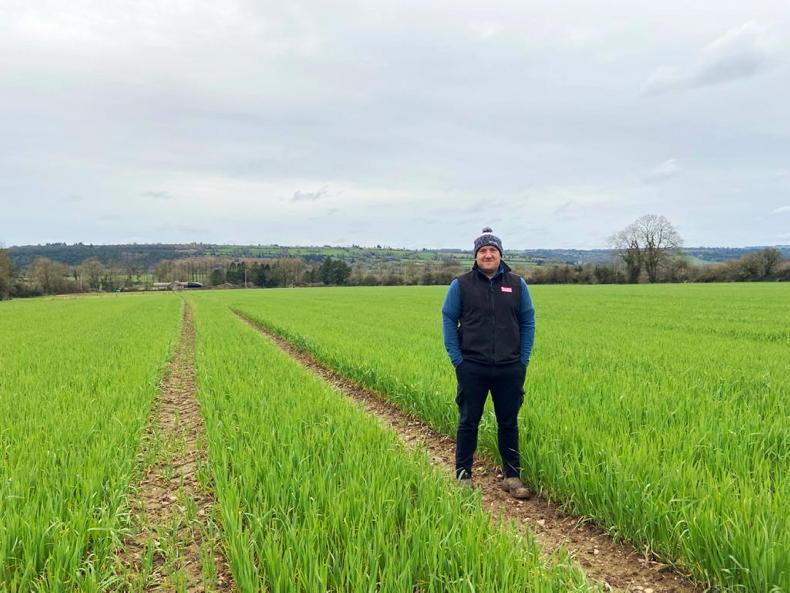
Footprint Farmer Pádraig Connery.
The P and K requirement is met, so the plan is to use 2.25 bags of Amidas, a urea-based fertiliser next week which will bring it up to 120 units of N per acre. Amidas contains 40% N and 5.6% S.
It will also get another bag and a half per acre of Sulcan, which will total 160 units of N on the winter barley.
Oats
The winter oats haven’t received a compound yet but Pádraig plans to spread 2.5 bags per acre of 10:5:25. The varieties are a 50:50 mix of Isabel and Husky and the aim is for the 70 acres to fill a 250t contract with Flahavan’s.
After the compound, the crop will be sitting on 25 units of N, 13 units of P and 63 units of K.
Pádraig plans to spread 1.7 bags per acre of Amidas, which will give the crop 70 units of N per acre, followed by one bag per acre of a top dressing, which should push the crop to a total of 122 units of N per acre.
In the past couple of years, Pádraig has made an effort to change the rotation to best suit the field, as opposed to what suited the workload
The winter oats are due the compound as soon as conditions allow.
Last year, Pádraig noticed some sterile brome cropping up in the headlands of one of the fields.
In order to stop the spread of the weed, he sprayed off the area and avoided it with the combine at harvest.
Pádraig is also beginning to see issues with resistant corn marigold spreading through the fields in another block, and has been trying to keep on top of it by spraying with a herbicide containing clopyralid.
In terms of disease control, there have previously been issues with take-all.
In the past couple of years, Pádraig has made an effort to change the rotation to best suit the field, as opposed to what suited the workload.
Just outside of Villierstown, Co Waterford, mixed farmer Pádraig Connery is getting ready to let his cattle out to grass. Wet weather has stalled work in the tillage fields at present.
He buys store cattle to graze and finish, alongside a tillage enterprise on just over 400 acres.
This year, Pádraig has 54 cattle on the farm, increasing from 45 last year.
A strong year for tillage in 2022 allowed him to buy in the extra store cattle, and he would like to have bought more if he had extra silage. Pádraig hopes to get at least half of these animals out as soon as ground and weather conditions allow to start grazing off the 20 acres of silage ground before 10 April. This will allow him to close off the ground and cut silage at the end of May. Pádraig’s target this year is 300 bales, some of which will come from ground he hopes to reseed this year.
Pádraig purchases most of his cattle from Roscommon and Ballinasloe through an agent. The cattle are March- and April-born and are killed coming up to 30 months old, which will be next August to October.
Pádraig used to buy his own cattle, but as the farm moved more into winter cropping, it meant that the month of October was spent planting instead.

Padraig hopes to get the cattle out to grass this week to graze off silage ground.
In terms of spring crops, almost 30 acres of spring beans were sown on 9 February at a rate of 205kg/ha. They were rolled and got a pre-emergence spray on 13 February.
For spring barley, Pádraig has three contracts to fill this year. He has 50 acres for Boortmalt, 25 acres of malting barley for Tírlan and 20 acres for Denns, which is destined for Irish Distillers.

Pádraig's spring beans are just starting to show. They were sown on the 9 February at rate of 205kg/ha.
Most of this ground is ploughed, and Pádraig is just waiting on slurry tanks to fill so that he can plough it in to the final 10 acres.
Otherwise, all the seed and fertiliser is in the yard and he is ready to start planting once ground conditions warm up a bit and wet weather holds off.
Compound fertiliser application rates for all crops have been determined by taking into consideration both soil indexes and quantities of slurry applied in the autumn pre ploughing.
After meeting with his agronomist, 10:5:25 + S was chosen as the most suitable product to best suit most crops.
Dawsum winter wheat is being grown on the farm this year, and it got 3.6 bags per acre of 10:5:25 + S on 7 March.
It is currently at 36 units of N, 18 units of P and 90 units of K, and will get up to 175 units of N.
There was one block of wheat that received no organic fertiliser so it got 3.6 bags per acre of 10:10:20 on 7 March and this block also got 1.6 bags per acre of MOP in February.
On the winter barley side of the business, the crop received three bags per acre of 10:5:25 on 17 February.
The varieties are Joyau, Integral and Belfry, and are currently sitting at 30 units of nitrogen (N), 15 units of phosphorus (P) and 75 units of potassium (K) in terms of chemical fertiliser.

Footprint Farmer Pádraig Connery.
The P and K requirement is met, so the plan is to use 2.25 bags of Amidas, a urea-based fertiliser next week which will bring it up to 120 units of N per acre. Amidas contains 40% N and 5.6% S.
It will also get another bag and a half per acre of Sulcan, which will total 160 units of N on the winter barley.
Oats
The winter oats haven’t received a compound yet but Pádraig plans to spread 2.5 bags per acre of 10:5:25. The varieties are a 50:50 mix of Isabel and Husky and the aim is for the 70 acres to fill a 250t contract with Flahavan’s.
After the compound, the crop will be sitting on 25 units of N, 13 units of P and 63 units of K.
Pádraig plans to spread 1.7 bags per acre of Amidas, which will give the crop 70 units of N per acre, followed by one bag per acre of a top dressing, which should push the crop to a total of 122 units of N per acre.
In the past couple of years, Pádraig has made an effort to change the rotation to best suit the field, as opposed to what suited the workload
The winter oats are due the compound as soon as conditions allow.
Last year, Pádraig noticed some sterile brome cropping up in the headlands of one of the fields.
In order to stop the spread of the weed, he sprayed off the area and avoided it with the combine at harvest.
Pádraig is also beginning to see issues with resistant corn marigold spreading through the fields in another block, and has been trying to keep on top of it by spraying with a herbicide containing clopyralid.
In terms of disease control, there have previously been issues with take-all.
In the past couple of years, Pádraig has made an effort to change the rotation to best suit the field, as opposed to what suited the workload.









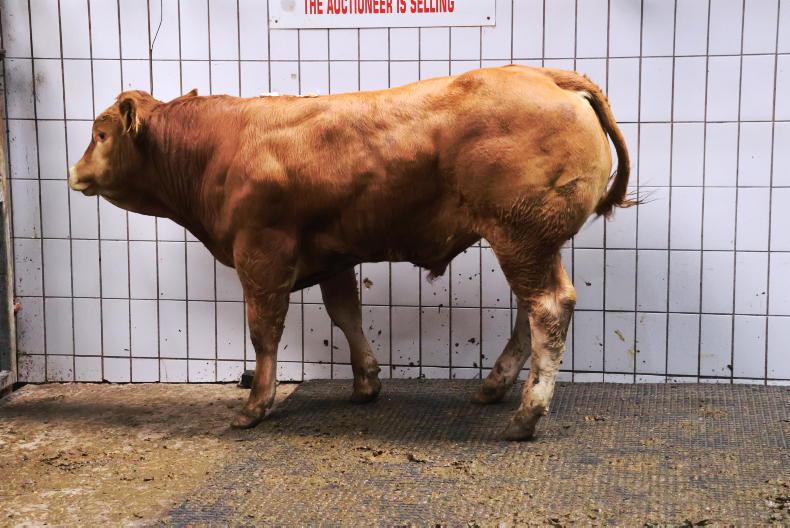

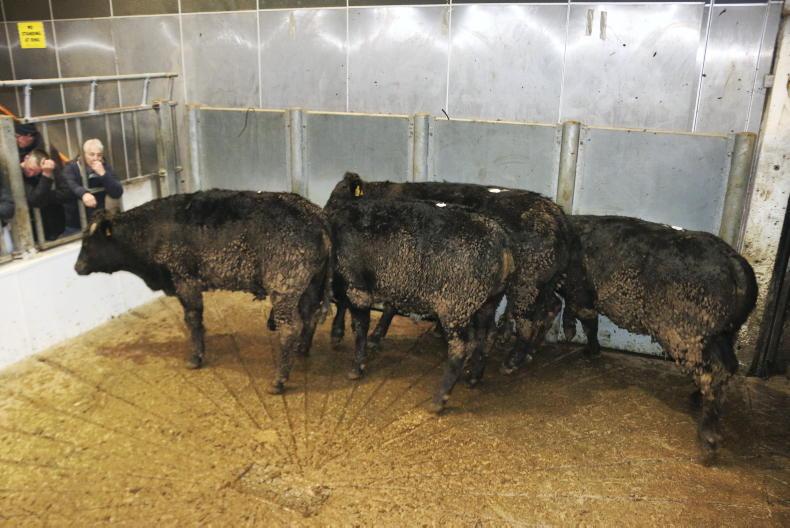
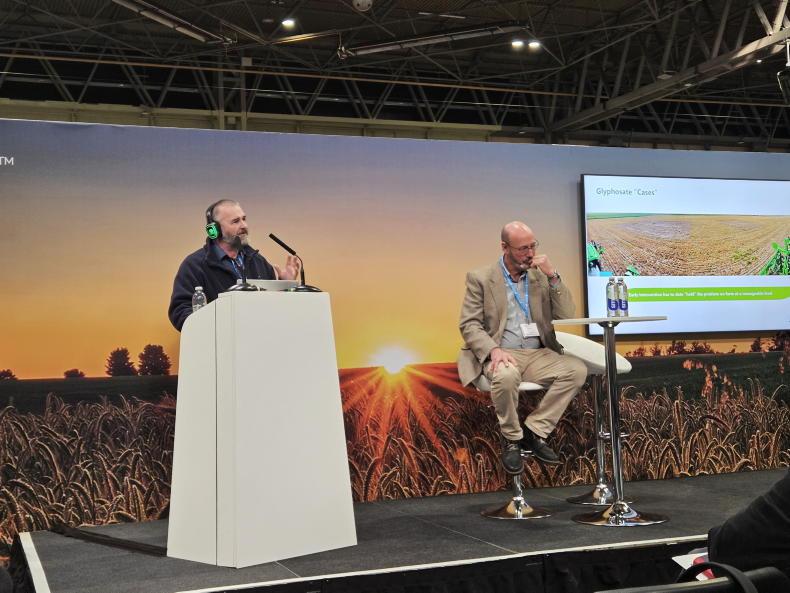
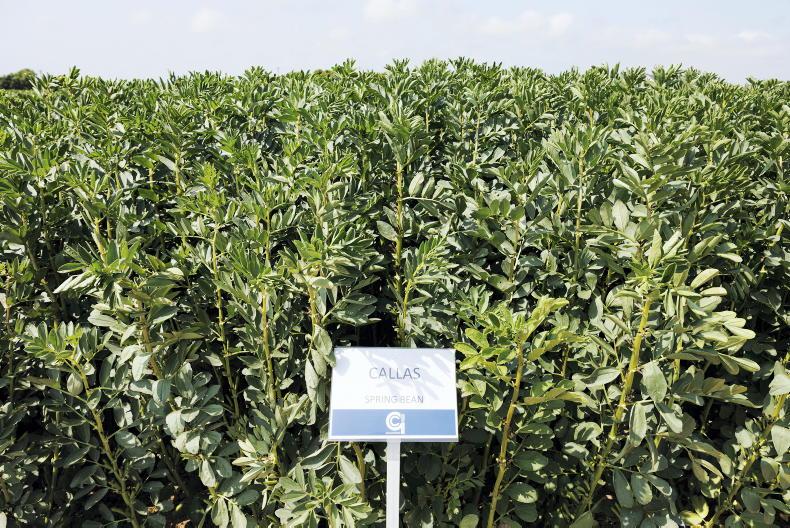
SHARING OPTIONS